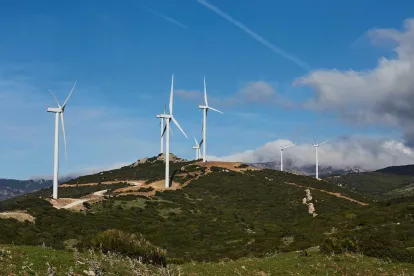On May 31, 2023, the Treasury Department and the Internal Revenue Service (IRS) released Notice 2023-44 (the Notice). The Notice provides additional guidance for the new program under Section 48C(e) created by the Inflation Reduction Act of 2022 (the IRA), which allocates $10 billion of the advanced energy project credit (the AEPC) to qualifying advanced energy projects (Qualifying Projects). Of the $10 billion allocation, $4 billion may be allocated only to projects located in census tracts (or adjoining tracts) in which a coal mine has closed since 2000 or a coal-fired plant has been retired since 2010 (each, an Energy Community).[1]
The Notice clarifies and modifies Notice 2023-18 (the Prior Notice). We discussed the Prior Notice in a recent alert.
Key Takeaways From the Notice
- The Notice provides an updated timeline for a taxpayer’s application (an AEPC Application) for the first AEPC allocation round (Round 1), which is largely the same as under the Prior Notice.
- The Notice updates Appendix A to the Prior Notice with minor revisions to the definitions and examples of projects that may qualify for the AEPC. The Notice expands Appendix B to the Prior Notice to clarify the technical review criteria and content requirements for AEPC Applications.
- A Qualifying Project will be located in an Energy Community if 50 percent or more of the square footage of the project is physically located within the Energy Community. Appendix C to the Notice provides a list of census tracts that are Energy Communities.
- The Notice clarifies the scope of a single “facility” for purposes of Section 45X(c)(1)(B) (the Section 45X Anti-Stacking Rule). The Section 45X Anti-Stacking Rule provides that a component of clean energy equipment will not qualify for the advanced manufacturing production credit under Section 45X (the AMPC) if the component is produced at a facility that includes property taken into account for purposes of determining an AEPC. Under the Notice, all tangible property that comprises an independently functioning production unit that produces one or more qualifying components of clean energy equipment (each, an Eligible Component) will be treated as a single “facility” for purposes of Section 45X.
- A project that is placed in service before being awarded an AEPC allocation will not be eligible to receive the allocation.
- Consistent with Section 48C(e)(7), the IRS will disclose the identity of the taxpayer and the amount of the AEPC with respect to each project that receives an allocation and a subsequent IRS certification.
- The Notice provides a procedure for taxpayers to inform the Department of Energy (DOE) and the IRS if, following the submission of a concept paper for a project (a Concept Paper) or an AEPC Application, the plans for the project change in any significant respect. For this purpose, a “significant change” is any change that a reasonable taxpayer would conclude might have negatively influenced DOE in recommending or ranking the project, or the IRS in awarding the AEPC, had the taxpayer described the change in the AEPC Application.
The AEPC Under the IRA
Section 48C, which was enacted by the American Recovery and Reinvestment Act of 2009, created a federal income tax credit for certain investments (Qualified Investments) in depreciable property necessary for the operation of Qualifying Projects. Prior to the IRA, the total credit allocation was capped at $2.3 billion. The IRA provided an additional allocation of $10 billion, $4 billion of which may be allocated only to projects located in Energy Communities.
Qualifying Projects under the IRA include:
- Projects that re-equip, expand, or establish an industrial or manufacturing facility for the production or recycling of certain types of equipment, including (1) equipment that produces energy from the sun, water, wind, geothermal deposits, or other renewable resources, (2) fuel cells, microturbines, or energy storage equipment, (3) electric grid modernization equipment, (4) equipment for the capture, removal, usage, or sequestration of carbon oxide emissions, and (5) equipment that refines, electrolyzes, or blends any fuel, chemical, or product which is renewable or low-carbon and low-emission;
- Projects that re-equip any industrial or manufacturing facility with equipment designed to reduce greenhouse gas emissions by at least 20 percent through the installation of (1) low- or zero-carbon process heat systems, (2) carbon capture, transport, utilization, and storage systems, (3) systems improving energy efficiency and reducing waste from industrial processes, or (4) any other industrial technology designed to reduce greenhouse gas emissions, as determined by the Secretary of the Treasury; and
- Projects that re-equip, expand, or establish an industrial facility for the processing, refining, or recycling of critical materials (generally, materials and minerals used in the production of batteries).
Under the IRA, the AEPC is equal to 30 percent of a taxpayer’s Qualified Investment in a Qualifying Project, provided that the project satisfies the prevailing wage requirements and the apprenticeship requirements. The AEPC is not eligible for the energy community bonus or the domestic content bonus under the IRA.
Updated Guidance for Round 1 Applications
The Notice provides the following updated timeline for the Round 1 application process, which is largely the same as the timeline provided under the Prior Notice:
- Taxpayer submits a Concept Paper to DOE. A taxpayer that intends to apply for an AEPC allocation must submit a Concept Paper through DOE’s eXCHANGE online portal (the Exchange Portal) prior to 12:00 p.m. Eastern Time on July 31, 2023.[2]
- DOE reviews Concept Paper. DOE will review the taxpayer’s Concept Paper and send the taxpayer a letter encouraging or discouraging the submission of an AEPC Application. The taxpayer may submit an AEPC Application regardless of whether DOE encourages or discourages submission.
- Taxpayer submits an AEPC Application and DOE performs initial review. The taxpayer must submit the AEPC Application through the Exchange Portal, and DOE will perform an initial review of the AEPC Application for compliance with eligibility and other threshold requirements.
- DOE reviews the AEPC Application. If the AEPC Application complies with all eligibility and threshold requirements, DOE will perform a full technical review of the AEPC Application. DOE will provide a recommendation regarding the acceptance or rejection of the taxpayer’s AEPC Application and a ranking of all applications. In addition, as part of this process, DOE will determine which projects are eligible for an allocation of the $1.6 billion of the AEPC that is reserved for Round 1 projects located in Energy Communities.
- The IRS makes a decision with respect to the AEPC Application. The IRS will accept or reject each AEPC Application based on DOE’s recommendation and ranking. The IRS will notify each taxpayer by sending a letter allocating the AEPC to the taxpayer or denying the taxpayer’s requested allocation. The IRS will make all Round 1 decisions by March 31, 2024. A taxpayer receiving a denial letter may request a debriefing with DOE regarding the taxpayer’s AEPC Application.
If a taxpayer receives an allocation of the AEPC, the taxpayer must notify DOE through the Exchange Portal that the project has met certain certification requirements described in Appendix B to the Notice (for example, confirming that the taxpayer has received all permits necessary to commence construction) within two years of receiving an AEPC allocation. The IRS, after receiving notification from DOE that the taxpayer has met these requirements, will certify the project by sending a certification letter to the taxpayer. Within two years of receiving this letter, the taxpayer must notify DOE that the project has been placed in service. The taxpayer then may claim the AEPC on its federal income tax return for the taxable year in which the project was placed in service. If the taxpayer has not placed the project in service within this two-year period, or has not notified DOE that the project has been placed in service within this period, the AEPC allocated to the taxpayer’s project will be forfeited.
If the taxpayer chooses to withdraw an AEPC Application at any phase of the application process, the taxpayer must provide a formal withdrawal notification through the Exchange Portal.
Energy Community Qualification
The Notice provides that a project will be located in an Energy Community if 50 percent or more of the square footage of the project falls within the Energy Community. This percentage is determined by dividing the square footage of the project that is located in the Energy Community by the total square footage of the project. Notably, this test is very similar to the footprint test for purposes of determining whether certain projects that are eligible for the investment tax credit under Section 48 are located in energy communities.[3]
Consistent with the Prior Notice, the Notice provides that the determination of whether a project is located in an Energy Community will be made when DOE provides recommendations to the IRS and will not be redetermined.
Appendix C to the Notice provides a list of census tracts that qualify as Energy Communities. In addition, contemporaneous with the release of the Notice, DOE provided a mapping tool to assist taxpayers to identify census tracts that are Energy Communities.[4]
Interaction Between Section 48C and Section 45X
The Notice provides important guidance for the Section 45X Anti-Stacking Rule. Taxpayers may claim the AMPC for producing Eligible Components and selling them to unrelated persons. However, the Section 45X Anti-Stacking Rule provides that components will not qualify as Eligible Components, and therefore the taxpayer will not be eligible for the AMPC with respect to these components, if the tax basis of any part of the applicable production facility is taken into account for purposes of the AEPC after August 16, 2022 (the date of enactment of the IRA).
The Notice provides that, for this purpose, a single “facility” includes all tangible property comprising an independently functioning production unit that produces one or more Eligible Components. The Notice provides a helpful example featuring two manufacturing operations within a single manufacturing site. In the example, Production Unit A manufactures solar photovoltaic wafers and Production Unit B manufactures solar photovoltaic cells. The two units are arranged in serial fashion, and the wafers produced by Production Unit A are utilized by Production Unit B to manufacture the cells. Production Unit A is eligible for the AEPC and the taxpayer claims an AEPC for Production Unit A, and, as a result, the components manufactured by Production Unit A are not eligible for the AMPC. By contrast, Production Unit B is an independently functioning production unit that manufactures Eligible Components and therefore is a single “facility” for purposes of Section 45X. Accordingly, the cells manufactured by Production Unit B are eligible for the AMPC. Notably, the example reached these conclusions despite the fact that Production Unit A and Production Unit B are part of the same manufacturing site, and Production Unit B appears to be dependent on Production Unit A to supply wafers, which are a key subcomponent of Production Unit B’s cells.
Taxpayers are guardedly optimistic that the term “facility” will be narrowly construed for purposes of other anti-stacking rules under the IRA. For instance, under Section 45Z, the clean fuel production credit (CFPC) is not available if the clean hydrogen production credit under Section 45V (CHPC) is claimed with respect to the same facility. If the Treasury Department and the IRS provide similar anti-stacking guidance with respect to the CFPC, developers of projects with potential to generate both renewable transportation fuel and hydrogen may have an opportunity to stack the CFPC and the CHPC, provided that each product is produced by an independently functioning production unit within the project site.
[1] All “Section” references in this alert are intended to refer to sections of the Internal Revenue Code of 1986, as amended.
[2] The Exchange Portal can be accessed at https://48c-exchange.energy.gov. DOE will open the Exchange Portal for user registration and submission of Concept Papers no later than June 30, 2023.
[3] The definition of “energy community” for purposes of Section 48, Section 48E, Section 45, and Section 45Y is broader than for purposes of the AEPC. We discussed the energy communities bonus credit for purposes of these Sections in a prior alert.
[4] The mapping tool, along with other Section 48C resources, can be found here.





 />i
/>i

